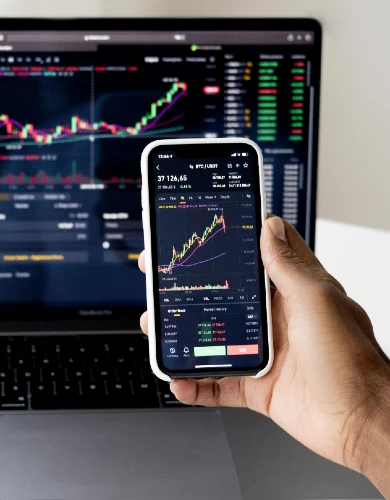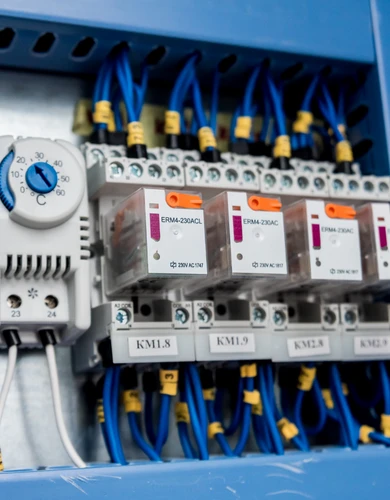How Power Purchase Agreements (PPAs) work
As the UK government advances its transition to a clean electricity grid, Power Purchase Agreements (PPAs) are becoming an increasingly vital mechanism for securing long-term power sales at fixed prices for wind and solar farm owners.
A PPA is a long-term contract in which a buyer agrees to purchase renewable power at an agreed price, typically lasting between 5 and 20 years.
Entering into long-term PPAs guarantees future revenue streams for firms developing wind and solar farms while helping energy suppliers and corporations stabilise energy costs over the long term.
In this guide, we explain how Power Purchase Agreements work. Here’s what we cover:
- How Power Purchase Agreements work
- Types of Power Purchase Agreements
- Key elements of PPA contracts
- Factors that influence PPA pricing
How Power Purchase Agreements work
A Power Purchase Agreement (PPA) is a long-term contract between a buyer (such as a business or an energy supplier) and a renewable energy generator (such as a wind farm).
Under this agreement, the buyer commits to purchasing electricity directly from the generator at a predetermined price, typically for 5 to 20 years.
To explain how a Power Purchase Agreement works, here is an outline of the different stages of the agreement.
💡 The step-by-step process below applies to physical PPAs rather than synthetic PPAs, which are financial agreements designed to protect against electricity price fluctuations rather than involving the actual delivery of power.
1. Electricity generation and supply
The generator in a Power Purchase Agreement (PPA) produces renewable power from assets that they have constructed, own, and operate (typically wind farms, hydroelectric dams, etc.).
The generated power is delivered to the buyer, with the delivery method depending on the type of PPA:
- On-Site PPA – Direct connection to the premises that use the power.
Off-Site PPA – Power is fed into the national grid and distributed to end users across mainland Britain.
2. Sleeving process
The sleeving process is required for Off-Site PPAs, where the grid transports the generated power to the buyer.
A licensed energy supplier (known as a sleeving party) acts as an intermediary to manage distribution through the national grid and regional distribution network operator grids.
Licensed energy suppliers act as sleeving parties because they are the only entity that can legally deliver electricity to end users via the grid.
The sleeving party covers the following costs:
- TNUoS charges – for using the national grid.
- DUoS charges – for using regional electricity grids.
- BSUoS charges – for balancing activities on the grid.
The buyer typically has a business energy contract with the sleeving party to cover the distribution costs incurred.
3. Payment and settlement
In a Power Purchase Agreement (PPA), the buyer typically agrees to purchase electricity based on the actual power delivered, as power generation from renewables is intermittent.
The PPA defines an agreed rate for each MWh of electricity provided, which is either fixed through the contract or linked to an index such as inflation.
4. Certification
The generator registers Renewable Energy Guarantees of Origin for renewable power sources through the Ofgem portal for each MWh of power generated.
The REGO certificates are then transferred to the buyer, who retires them to demonstrate that renewable sources have generated their power.
Types of Power Purchase Agreements
This section explains the most common types of Power Purchase Agreements used for trading in the British wholesale electricity market.
On-Site PPA
An On-Site Power Purchase Agreement is a contract where a renewable energy generator installs, owns, and operates a power generation system on the same site where the power will be used.
An On-Site PPA is an effective way for large businesses to generate renewable power without incurring upfront costs.
- Location: At corporate premises with power demand.
- Generation: Typically, commercial solar panels or small-scale wind turbines.
- Term: Typical commitment to purchase all power for 10–25 years.
- Unit pricing: Business electricity prices per kWh are fixed or indexed to inflation.
- Distribution: Directly connected to the business premises.
Excess power from On-Site PPAs is typically exported back into the grid through a business electricity connection using schemes like the Smart Export Guarantee.
An on-site PPA is a great way for a business to avoid expensive upfront commercial solar installation costs.
Off-Site PPA
Also known as a Sleeved PPA, an Off-Site Power Purchase Agreement is a contract where the buyer purchases renewable energy from a generator, which is then distributed into the national grid.
In an Off-Site PPA, a licensed energy supplier acts as a sleeving party to manage the distribution of the generated power through the national grid to the buyer.
Where a business energy supplier is the buyer of an Off-Site PPA, they manage power distribution through the grid to their individual green business energy customers.
- Location: Anywhere in mainland Britain connected to the national grid.
- Generation: Large-scale UK wind farms or utility-scale solar farms.
- Term: Typical commitment of 10–20 years.
- Unit pricing: Unit rate per MWh, fixed or indexed to inflation.
- Distribution: Managed by a licensed energy supplier, who oversees electricity distribution through the grid.
Synthetic PPA
Also known as a Virtual or Financial PPA, a Synthetic Power Purchase Agreement is a financial arrangement between a generator and a business or supplier to hedge against energy pricing risk.
In a Synthetic PPA, the generator sells the power it generates onto the national grid at the prevailing wholesale market price.
The business also purchases its energy from the wholesale market, but a financial settlement occurs with the generator as follows:
- The generator pays the corporate buyer the difference if the market price exceeds the agreed PPA price.
- The corporate buyer pays the generator the difference if the market price is lower than the agreed PPA price.
What is the difference between PPA and corporate PPA?
The key difference between a PPA and a corporate PPA is the buyer in the contract.
In a Power Purchase Agreement (PPA), the buyer is typically an energy supplier (e.g. British Gas, Octopus, EDF Business Energy, etc.) purchasing electricity on behalf of their customers.
In contrast, in a corporate PPA, the buyer is typically a large business energy customer seeking to buy electricity directly from a generator.
Find out more in our guide to energy procurement with a corporate PPA.
Portfolio versus named asset PPAs
In a portfolio PPA, renewable electricity is generated from multiple assets, allowing generators to offer more flexible terms and shorter contract lengths.
In contrast, a named asset PPA generates power from a specific asset, meaning the volumes of power generated depend on the performance of that individual asset.
The largest wind farm operators in the UK, such as Ørsted, SSE, Scottish Power, and E.ON can offer Corporate portfolio PPAs as they operate extensive portfolios of wind farms that generate vast quantities of renewable power.
Types of energy sources for PPAs
Power Purchase Agreements (PPAs) are widely used in Britain, enabling investors in power generation assets to secure guaranteed purchase prices.
Following the push to decarbonise the national grid, most new developments focus on renewable or low-carbon technologies. The most common sources of PPAs are:
- Onshore and offshore wind farms
- Solar farms
- Biomass power plants like the Drax Power Plant
- Nuclear power plants like Sizewell C
Key elements of PPA contracts
This section explains the key elements of a Power Purchase Agreement.
Parties
A PPA defines the following contractual parties:
- Buyer (Off-taker) – The business, organisation, or licensed energy supplier that agrees to buy the generated power.
- Renewable energy generator (Seller) – The entity developing, owning, and operating the renewable generator.
- Energy supplier (Sleeving Party) – The party responsible for managing the distribution of the power generated.
Term
PPAs are typically long-term agreements lasting 5 to 20 years. During this time, the generated power is delivered at the agreed-upon price.
The PPA agreement defines the start and end date of the contract and includes the following provisions:
- Early termination fees – A calculation of the fee payable to the other party if the buyer or seller chooses to terminate the agreement before the agreed term ends.
- Force majeure – Allows for early termination or renegotiation in extreme circumstances, such as natural disasters or grid failures.
The agreement also establishes a framework for renewal and renegotiation at the end of the fixed term.
PPA pricing
A PPA agreement sets out the agreed price at which the buyer will purchase power from the seller during the contract term.
The unit price per MWh of electricity sold is typically determined using one of the following structures:
- Fixed price – The buyer pays a set price per MWh for the duration of the contract.
- Market-indexed price – The price fluctuates based on wholesale market conditions.
- Hybrid pricing – A combination of fixed and indexed pricing to balance risk and flexibility.
- Floors and ceilings – Some contracts include minimum and maximum price limits to protect against extreme market conditions.
The pricing clause in a PPA also defines how frequently bills are issued and the payment terms required by the buyer.
Volume commitment and delivery
Power Purchase Agreements define the volume of electricity sold and purchased through the agreement.
- Pay-as-generated – The corporate buyer purchases electricity only when generated by the renewable energy project, with no guarantee of a fixed volume. This is typical of named-asset PPAs.
- Baseload PPA – The corporate buyer always receives a fixed volume of electricity. The seller agrees to purchase energy from the wholesale market when shortfalls arise.
- Minimum and maximum – The buyer commits to purchasing electricity within a defined range, allowing for some flexibility in the power generated by renewable assets.
The delivery clause in the agreement also specifies whether the buyer will sell the REGO certificates generated by the renewable asset.
Factors that influence PPA pricing
The price per MWh of power sold during the contract is ultimately negotiated between the buyer and seller of the PPA but is influenced by the following factors:
- Current market conditions – The prevailing electricity prices in the wholesale market.
- Contract length – Longer PPAs typically have lower prices due to anticipated improvements in renewable energy technologies.
- Generation type – PPAs from weather-dependent renewables, such as wind and solar, are typically cheaper than the reliable baseload power offered by hydroelectric and UK nuclear power plants.
- Supply guarantees – A “pay-as-produced” structure offers lower prices compared with a PPA that guarantees a minimum delivery volume.
- Buyer creditworthiness – Large corporations can typically negotiate cheaper rates, as the default risk is lower than small business energy customers.

